
Forget the stigma and shame. Financial expert Bruce Sellery helps you understand bankruptcy and how to decide whether it's the right decision for your family...
- Subject:
- Business
- Financial Literacy
- Material Type:
- Activity/Lab
- Date Added:
- 02/26/2024

Forget the stigma and shame. Financial expert Bruce Sellery helps you understand bankruptcy and how to decide whether it's the right decision for your family...

The material in this lesson will help students become aware of the warning signs of financial difficulties. When difficulties arise, students should first contact their creditors. Next, efforts should be made to revise spending patterns. In addition, assistance from a Credit Counseling service agencies might be considered. What if these actions do not help?

This collection features resources to support teaching Module 26B: Handling Debt Problems B from the Saskatchewan Financial Literacy curriculum. This activity suggests articles, websites, assignments, and discussion topics to help develop some problem-solving skills in relation to managing debt problems.

Part of micro-economics involves financial decision making at an individual level. Understanding "why" we do what we do, when it comes to decision making, will form an important foundation to making financial decisions. Cognitive Bias is a systematic error in thinking that occurs when people are processing and interpreting information in the world around them and affects the decisions and judgements they make. These two documents allow students and teachers to work through cases and situations where various types of cognitive bias exists and how it may impact decision making.

This collection features resources to support teaching Module 6C: Applying Personal Spending Plans from the Saskatchewan Financial Literacy curriculum. In Round 1, students learn to allocate their "20 bean salary" according to which options they want to spend their beans on. Round 2 forces the students to reduce their salary to 13 beans and make decisions about where they should make their "cuts". Round 3 includes some "life happens" challenges that allow students to make more decisions on where to move the beans in order to deal with the situations. This activity completes with some reflection questions on how this activity relates to budgeting with real income.

Smart money management requires building a foundation in strong, healthy financial habits. In this activity, we’ll learn about how habits work and then apply that knowledge to a financial habit that you’d like to change.Have students think about a financial habit they would like to change, and then answer the questions in the booklet.
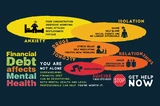
There are several interesting articles written by Anne Gaviola on Vice focused on Canadian finances, debt, and correlations between money and a person’s well-being. Keeping your debt a secret can mess with your mind and body. The culture of secrecy around debt causes young people to suffer in silence, making it even harder to manage debt. Use this content for case-based learning opportunities.
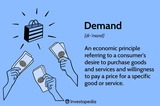
This activity supports Module 32e Economic Factors that impact personall financial decisions. We all know demand for goods and services can rise and fall, but what causes it to do those things? In this activity students will demonstrate how consumers’ income and preferences, prices of substitutes, and number of consumers in a market can affect demand. Students will reflect on their learning and how the actions may affect consumer demand for products and eventually the money we spend on purchases these products!

Marginal Cost/Benefit Decisions and the Investment Industry Watch video: DRUG SHORT ON NETFLIX in the Dirty Money Series (Series 1)This activity is meant to be used once Marginal Cost, Marginal Benefit and Diminishing Marginal Utility and Investing (short selling) are taught. The movie "Drug Short" is part of the Dirty Money Series 1 on Netflix. Underlying issues in this case are greed, ethics, corporate profit and efforts to maximize shareholder profit at all costs (even human life). This activity looks at the activites of pharmaceutical companies and their efforts to make money, yet disregarding the impact on people who rely on the medicine. Short seller investors "sold the stocks" of drug companies when the prices were high, predicting that there was unethical activities which would eventually bring the share price down. Short sellers make money by expecting share prices to fall, when they identify bad companies or unethical behavior (which is exactly what happened here).

Venture: Entrepreneurial ExpeditionIntroduce 7th - 10th grade students to the fundamentals of entrepreneurship, from creating a business plan to performing market research, in this food-truck simulation. In this program, students will progress through online (and offline) lessons entitled Building a Budget, The Entrepreneur in You, Planning & Building a Business, Your Business Snapshot.
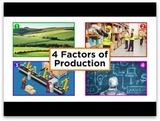
This activity includes a video explaining what "factors of production" are and how they contribute to costs of everything. In this example, Disney is described in terms of the items needed to operate the theme parks and business... and how these "factors" contribue to why Disney is SO EXPENSIVE!Activity includes watching a video and 3 discussions questions at the end. Lesson should take 1 hour to review with students.

In this Case Study, students will take on the role of a credit counselor to assist a borrower who finds himself in serious financial distress. Several options will be presented, and students will identify pros and cons of each approach and choose a path forward.

Managing debt loads can be very difficult and overwhelming at times. Hiding from debt and avoiding the problem, will only make the situation worse. This activity includes mini case studies on how to handle various debt problems so that the students can take control of their debt and move forward to a better financial future.

From the computer chips in our smart phones to the clothes we wear, many things we use everyday are the result of international trade. You may be surprised to discover you are dependent on many countries for your favourite items.Students will learn about international trade and how closely it impacts every Canadian. Activities include basic language and concepts of trade including terms such as "import" and "export", the purpose and function of international trade, Canada's major imports and exports, thinking about trade benefits and potential ethical concerns regarding international trade.

This activity contains a presentation, notes, activity, and assignment to help teach Supply and Demand within the Micro-economics Module Outcome 32e. Demand and Supply are perhaps sone of the most fundamental concepts of economics and the backbone of a market economy. The relationship between demand and supply underlies the forces behind the allocation of resources. In market economy theories, demand and supply theory will allocate resources in the most efficient way possible. How? Let us take a closer look at the law of demand and the law of supply.
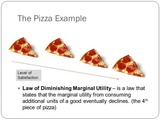
This activity supports Module 32: Microeconomics- Explore economic factors that impact personal or community financial decisions. The attached presentation and handout outlines videos and questions to guide the student's learning about marginal cost, marginal benefit, scarcity, and opportunity cost. This content is meant to teach the student to explore these concepts about decision making, especially financial decisions. Considering what we "give up" to get something is very important when spending money. Giving up something is not just the amount of money you gave up; it includes time or the "next best thing" you could have done with that time and money.
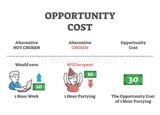
This activity involves four scenarios where the students will uncover the opportunity costs for each scenario (every decision involves a trade-off). The opportunity cost is the profit lost (or total cost- financial and non-financial costs) when one alternative is chosen over another. A trade-off is understanding that you are going to lose something, in relation to time, money, or energy, when the decision to choose something else is made. When you buy or do one thing with your money, you must give up the chance to buy or do something else. This is a trade-off: what you give up to get what you want. When you spend part of your income on certain things, you give up spending it on other things.
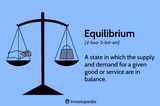
A shortage or surplus of the goods we buy can have a significant impact on the prices we pay. Since the goods we buy are often made up of other goods, it’s common for a shortage or surplus anywhere in the supply chain to have a significant impact on the market. In this activity you will demonstrate shortages and surpluses, analyze what happens when they occur, and discuss how they can impact our daily lives.

A product’s unit price can be helpful in comparison shopping, making sure you’re not paying more money for less of a product. But did you know that you should also be comparing the products you buy to...themselves?! Making products smaller while keeping the price the same is a sneaky way of raising prices. In this activity you’ll discuss how shrinkflation affects consumers and create your own plan to downsize a product in hopes that consumers won’t notice the difference.

Economic cycles have risen and fallen over the past 100 years, in a somewhat predictable fashion behaving like a wave with periods of: peak, trough, recession, recovery. An economic expansion is a term sometimes used for the increasing growth period of the business cycle. The peak is when it is at its highest point. An economic contraction is a term sometimes used for the downturn (negative growth) of the business cycle. The trough is when it is at its lowest point. All of these points in an economic cycle have important impacts on financial decision making.Many individuals make emotional decisions based on where an economic cycle may be, instead of looking a rational evidence of where the economic cycle might be going. Attached with these handouts is a document titled "Reasons Why Investors Avoided The Stock Market" which shows many major negative events, followed by tremendous growth in the economy. If individuals understand these normal economic cycles, they can really benefit financially through investments and sound financial decision making.